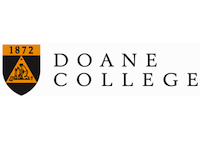Below is a summary of the abstract you submitted. Presenting author(s) is shown in bold.
If any changes need to be made, you can modify the abstract or change the authors.
You can also download a .docx version of this abstract.
If there are any problems, please email Dan at dar78@pitt.edu and he'll take care of them!
This abstract was last modified on May 2, 2019 at 12:08 p.m..

Micro-organisms called bacteriophages, or phages, are viruses found in abundance around the world. Mycobacteriophages Duggie and Hocus were discovered in soil samples at Doane University in Crete, Nebraska in September of 2018; Kloppinator was found by Johns Hopkins University in Baltimore, Maryland in 2012. After isolating, purifying, and amplifying the bacteriophages, their structures were examined through Transmission Electron Microscopy (TEM) images. Through this process, it was determined that all three phages are of siphoviridae morphology, meaning they have non-enveloped capsule heads and have long, non-contractile tails. Afterwards, the phages’ genomic DNA was extracted and sequenced, establishing that all three are lytic and part of the B1 cluster. The lengths of the genomes range from 68,053 to 68,885 base pairs with approximately 100 predicted genes in each. We used the software DNA Master, Starterator, Phamerator, and BLAST in order to predict the start codons of open reading frames (ORFs) by comparing each feature and genome to the features and genome of similar phage. Using HHpred and NCBI BLAST, we deduced the function of each gene to find its importance in the genome. Most of the functions were found to be unknown which is not uncommon for Mycobacteriophages. The information that we accumulated through our annotation can be used by others in the future when they are predicting the same aspects of their genome.

